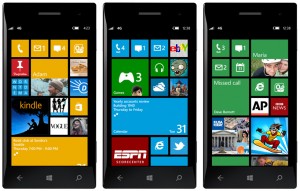 The last year saw Microsoft’s Windows Phone powered devices received well by the public, though sales failed to take off as expected. The modest success the platform could achieve was due to the backing of a well known manufacturer like Nokia. This was mostly due to the popularity and market acceptance of Nokia’s Lumia family of devices. Apart from the solid hardware that powers the Lumia devices, what made Lumia so popular is the exclusive range of Nokia apps which served as a stopgap to several holes in the app store of the operating system. With the arrival of the Windows Phone 8 operating system in October and the launch of Nokia’s flagship device, the Lumia 920 in November, sales of Windows Phone devices have finally started gathering momentum.
The last year saw Microsoft’s Windows Phone powered devices received well by the public, though sales failed to take off as expected. The modest success the platform could achieve was due to the backing of a well known manufacturer like Nokia. This was mostly due to the popularity and market acceptance of Nokia’s Lumia family of devices. Apart from the solid hardware that powers the Lumia devices, what made Lumia so popular is the exclusive range of Nokia apps which served as a stopgap to several holes in the app store of the operating system. With the arrival of the Windows Phone 8 operating system in October and the launch of Nokia’s flagship device, the Lumia 920 in November, sales of Windows Phone devices have finally started gathering momentum.
Nokia’s Lumia family of WP8 devices is now nearly complete, with the recent launch of the Lumia 720 and Lumia 520 during the Mobile World Congress in Barcelona. Now, Nokia has Lumia devices across a wide price range, from the top-of-the-line Lumia 920 to the Lumia 520 which the company claims is “the most affordable Windows Phone 8 device” in the market. With Nokia’s strategy to offer a wide array of colorful and spectacular hardware in a market dominated mostly by industrial designs, we are looking at a much more vibrant market now.
Various statistics from the previous set of Windows Phone 7 powered Lumia devices show that the budget and mid-range smartphone segment is where Nokia has achieved a larger volume of sales. If this trend were to continue with the Windows Phone 8 offerings from the Lumia family, the sale of Lumia 720, 620 and 520 will have a significant contribution this year. Nokia is indeed going all-in with Windows Phone and Lumia. Their upcoming plans include a Windows Phone powered PureView camera device set to debut on AT&T, a variant called Lumia 928 to feature on Verizon, and an aluminum body variant available on T-Mobile. All these devices are set to launch shortly and might give a decent push to Lumia’s market share.
This year will turn out to be a very important one for Microsoft. Helped by Nokia’s sales, Windows Phone may be able to surpass Blackberry to the third place spot with a nearly 10% market share. This might just be the thing that the platform needs to attract more developers and help build up a larger app base. Though the operating system features over 130,000 apps, there are still several key apps, such as Dropbox and Instagram, which are still not available on the platform.
March 9, 2013 at 9:35 pm
I really love my Nokia Lumina 7,at first I thought. I would never get to understand how it works, or find apps I really would use. I want the windows 8 so badly I can taste it but I don’t have that kind of money. So poor me.